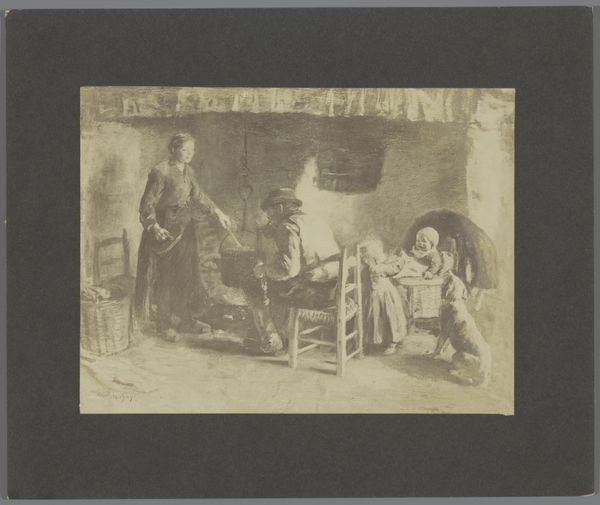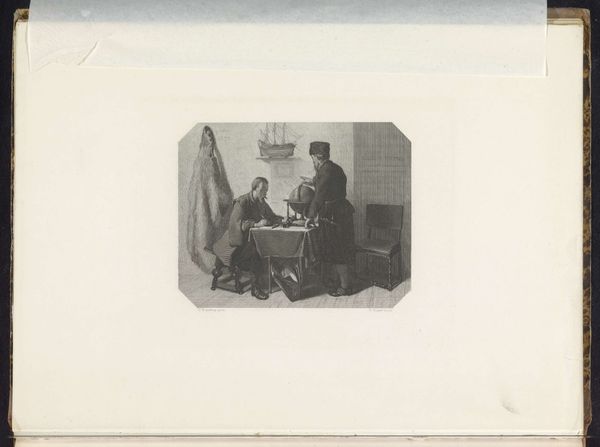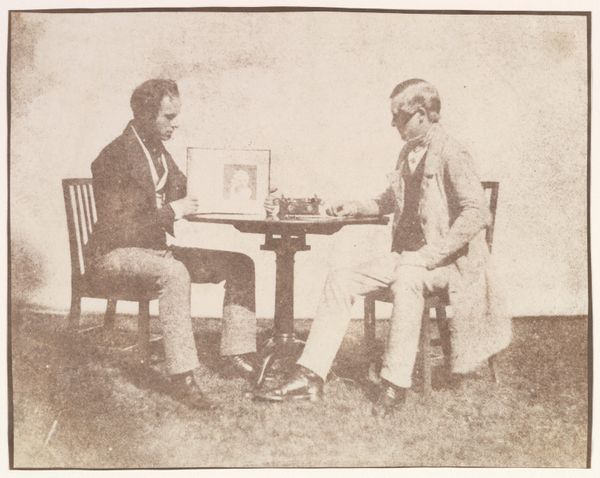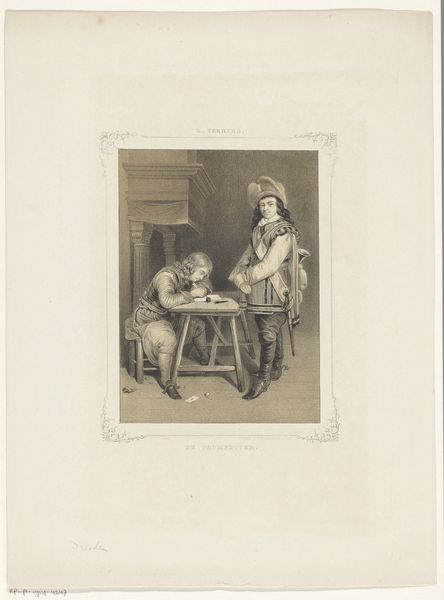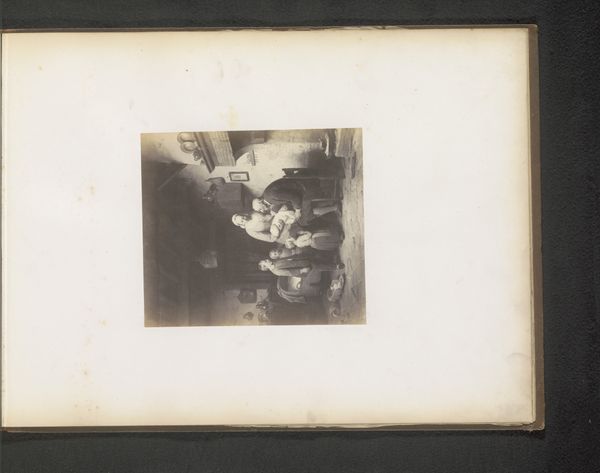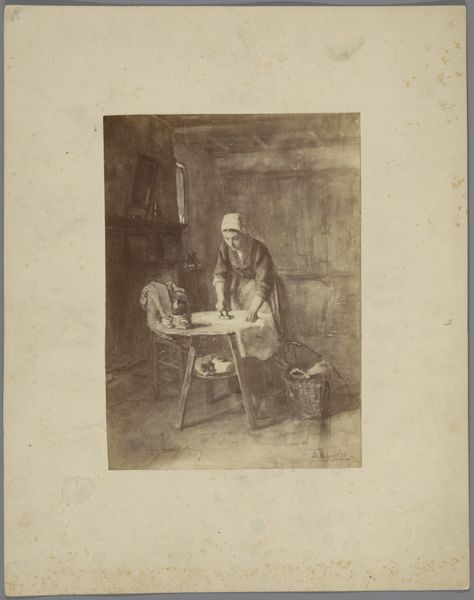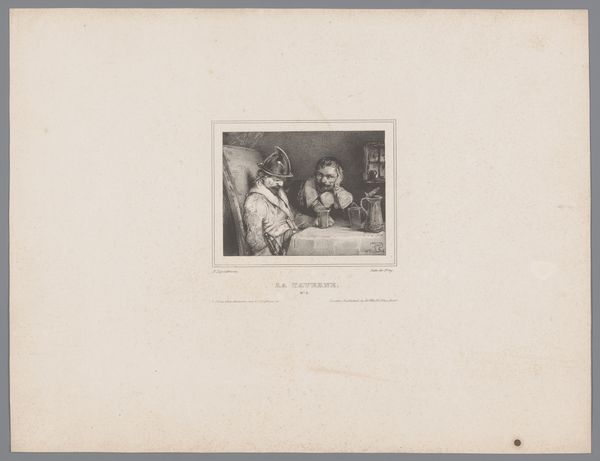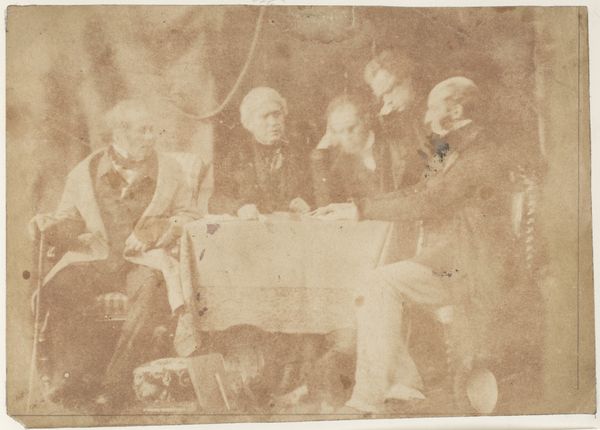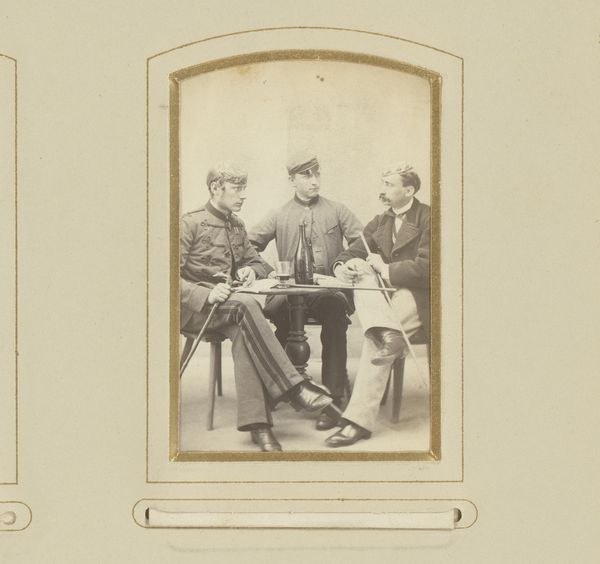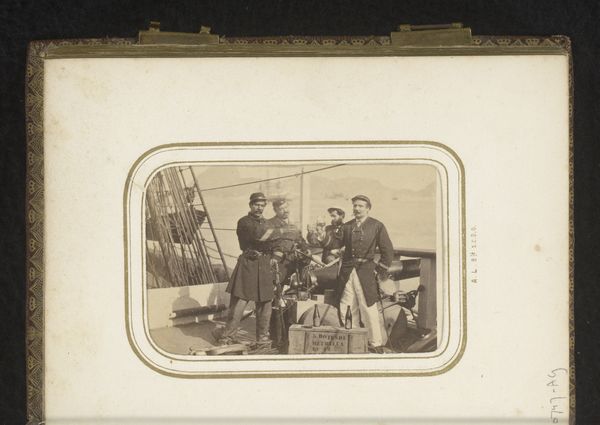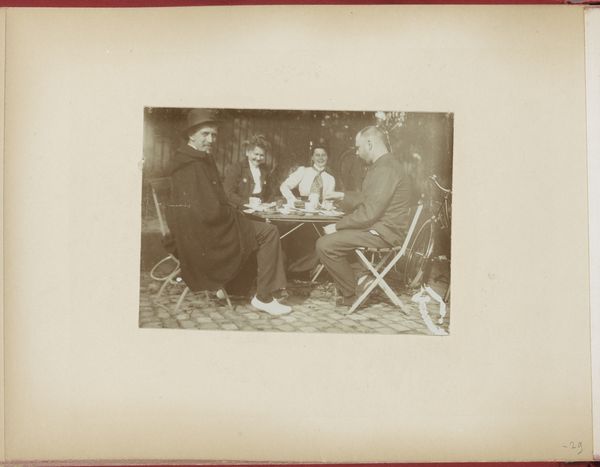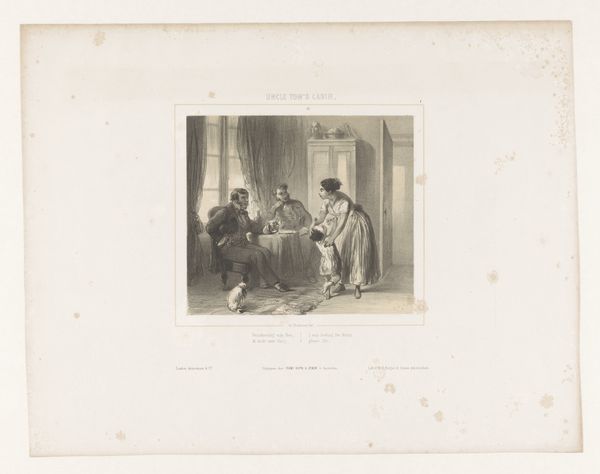
Group of Gentlemen Conversing over a Glass of Wine 1846
0:00
0:00
photography, ink, gelatin-silver-print
#
portrait
#
still-life-photography
#
toned paper
#
16_19th-century
#
photography
#
ink
#
group-portraits
#
romanticism
#
gelatin-silver-print
#
men
#
genre-painting
Dimensions: Mount: 12 3/16 × 9 11/16 in. (31 × 24.6 cm) Image: 5 1/2 × 7 13/16 in. (13.9 × 19.9 cm) Top corners trimmed
Copyright: Public Domain
Editor: Here we have William Henry Fox Talbot's "Group of Gentlemen Conversing over a Glass of Wine," created in 1846 using photography, ink and gelatin silver print. It almost has the feel of a candid snapshot, despite the medium being so early in photography's development. What catches your eye in this tableau? Curator: For me, it’s all about the context of production. This isn’t just a photograph; it’s an early experiment in capturing social life using emerging technology. Consider the labor involved in setting up the shot, the preparation of the chemicals, the constraints of exposure time. Look at the table: the wine bottle, the pitcher, the table cloth. Do you see a social stratification hinted at here through access to materials and leisure? Editor: That's a great point. The leisure aspect, for sure! I hadn't really considered the physical labor involved with photography back then. Curator: Exactly! These early photographs were arduous processes. We’re so accustomed to instant photography now, but think of the chemicals involved, the sourcing, and who controlled that production. Consider the ink used. What kind is it, and what does that say about the economic reach of the subject and the photographer himself? Editor: It’s like these materials—ink, gelatin silver, even the wine and cloth on the table—speak volumes about the conditions of 19th-century life. I mean, it’s almost like still life *becoming* a live moment... Curator: Precisely! And what does this transition mean for our understanding of realism versus representation? Were these materials readily available, or luxurious items carefully curated? It affects how we read the final product and who it was made for. Editor: Wow, I never thought about it like that before. Focusing on the material conditions really does give it a whole new layer of meaning! Curator: Seeing the artwork through the lens of materiality really emphasizes the social and economic factors intertwined with its creation.
Comments
No comments
Be the first to comment and join the conversation on the ultimate creative platform.
